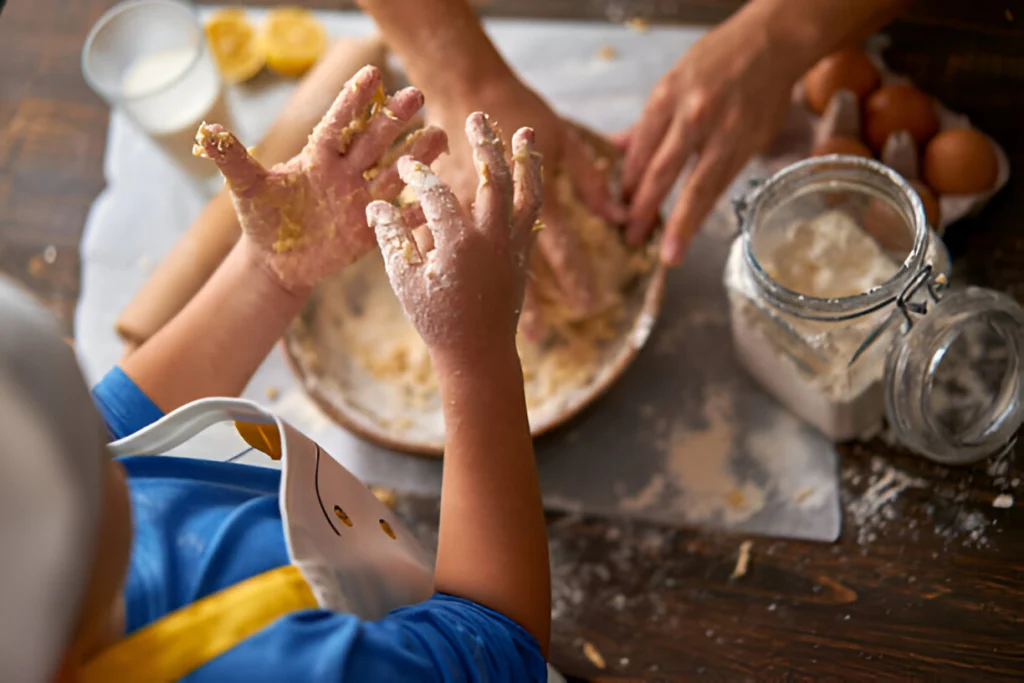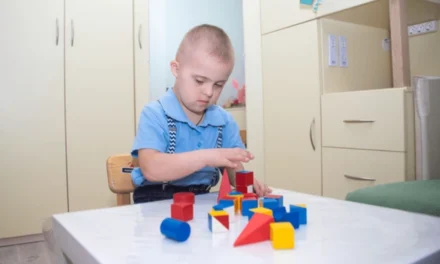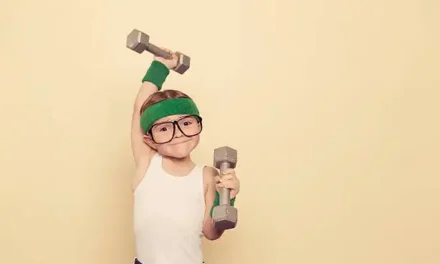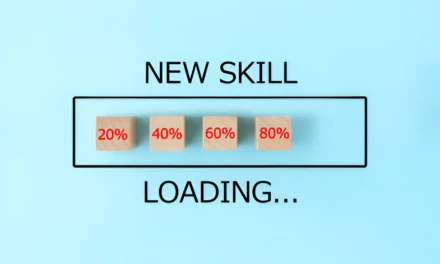Math skills are essential in school and play a crucial role in everyday life. Learning math basics is vital for success. You can make math fun for your kids with engaging activities. This article will show you eight fun ways to improve your kids’ math skills.
Key Takeaways
- Incorporate online resources and educational apps to supplement traditional math learning.
- Connect math concepts to real-life situations to ignite your child’s passion for the subject.
- Engage your kids in physical activities that combine movement and math to keep them motivated.
- Explore the cultural and historical aspects of mathematics to enhance your child’s understanding and curiosity.
- Encourage collaborative learning with siblings or friends to reinforce mathematical concepts.
Online tools are great for math learning1. There are many online math programs for kids1. By linking math to everyday life, you can spark your child’s interest and improve their problem-solving skills1. Mixing math with physical activities keeps kids excited about learning math1.
Math treasure hunts can boost problem-solving skills in kids1. Exploring math’s cultural side can deepen their understanding and curiosity1. Learning math with a friend or sibling helps solidify concepts1. Math classes for kids can also build their confidence and love for math1.
Developing Foundational Math Skills
Mastering foundational math skills is key for a child’s daily life and future success. From counting money to measuring ingredients when cooking, math skills play a vital role in everyday tasks. Developing a strong foundation in math early can set a child up for academic achievement and better prepare them for the challenges they may face in higher education and life.
Importance of Math Skills in Daily Life
A study in the Journal of Educational Psychology found a strong link between a solid math foundation and better scores in math and reading2. The U.S. Bureau of Labor Statistics also shows that jobs needing advanced math skills often have higher salaries and better growth prospects2. Making math a part of a child’s daily routine can help them love math and prepare them for the future.
Role of Parents and Caregivers
As a parent or caregiver, you are crucial in helping your child develop foundational math skills. By adding fun and engaging math activities to your child’s daily routine, you can make learning math fun. This article will give you eight practical activities to help your child develop essential math skills.
“Math skills are the foundation for a child’s future success. As a parent, you have the power to make learning math fun and engaging.”
Whether it’s using math apps, exploring online math courses, or adding hands-on math activities to your child’s daily life, there are many ways to help their math skills development2. By actively participating in your child’s math education, you can help them succeed and feel confident in this important subject.
Counting with Everyday Objects

Counting with everyday objects is a great way to help your child learn math. It’s simple and fun. It helps them understand numbers and counting.
Start by counting toys, steps, or apples together. As they get better, try counting chairs or cars. This keeps their math skills sharp3.
- Use counting songs to make learning fun3.
- Make counting part of your daily life for a fun learning experience3.
- Try playdough mats for number practice that kids love3.
- Play board games like “Candy Land” for counting fun3.
- Use tangible objects like blocks for hands-on learning3.
- Help with cooking activities to practice counting in real life3.
By adding these fun activities to your child’s day, you help them learn math in a fun way4. It’s important to make learning a positive experience. This lets your child explore and learn about numbers and quantities4.
“Counting with everyday objects is a simple yet powerful way to help children build a strong foundation in math skills.”
Learning math takes time, but with a positive learning space, your child can love numbers and math4.
EuroKids has been teaching kids about numbers for over 21 years5. They focus on child development and have a caring environment. Their EUNOIA curriculum helps kids learn math through fun activities5.
Playing Math Games
Math games are a great way to make learning fun for your kids. You can find everything from classic board games like Uno and Yahtzee to cool online math games and mobile math games. These games teach math and help kids solve problems, think critically, and make friends.
Board Games and Card Games
Board games and card games are great for learning math. Games like Monopoly and Around the Block make learning math fun. They help kids practice addition, subtraction, multiplication, and division.
These games also help kids think strategically. Players have to think about their moves and make smart choices.
Online and Mobile Games
The digital world offers lots of online math games and mobile math games. These games make learning math fun and interactive. They use points, levels, and rewards to keep kids interested.
Some top math apps include Mathletics, SplashLearn, and Khan Academy Kids.
| Game | Grade Level | Key Features |
|---|---|---|
| Prodigy Math | 1st to 8th grade | Standards-aligned math game with RPG-style play6 |
| Around the Block | 3rd to 8th grade | Quick math facts recall in a group setting6 |
| Math Baseball | 3rd to 8th grade | Team-based competitive practice of math problems6 |
| Bouncing Sums | 3rd to 8th grade | Combines physical activity with mental math challenges6 |
| Math Facts Race | 2nd to 5th grade | Fast-paced, team-based drill on math fact fluency6 |
| Math Facts Bingo | 3rd to 6th grade | Engaging practice of multiplication tables through bingo6 |
| Math Is Fun | 1st to 5th grade | Independent exploration of math concepts6 |
| 101 and Out | 2nd to 6th grade | Enhances strategic thinking and arithmetic skills6 |
| One-Meter Dash | 3rd to 5th grade | Understand and estimate measurements in a collaborative activity6 |
| Back-to-Back | 2nd to 6th grade | Promotes quick thinking and problem-solving in pairs6 |
| Math Tic-Tac-Toe | 1st to 8th grade | Reinforces various math skills in a familiar game format6 |
| Get the Math | 6th grade and up | Explores real-world math applications in different careers6 |
| Simon Says: Geometry | 2nd to 3rd grade | Targets kinesthetic learners to understand basic geometry6 |
| Math Goodies | 4th to 8th grade | Offers a resource for practicing math skills6 |
Math games make learning fun and help kids get better at math. They help kids understand math in a creative way. These games can be played in class, for homework, or just for fun.
“Games provide safe opportunities for students to take academic risks, improve math proficiency, and intrinsically motivate problem-solving behavior.”7
Math games let kids learn at their own pace. They can choose the games they like and how hard they want them to be. This helps kids feel confident and ready to learn more.
Baking and Measuring Ingredients

Baking is a fun way for kids to learn about fractions and measurements8. In North American kitchens, we use the Imperial System. This includes units like teaspoons, tablespoons, cups, pounds, and ounces9. Kids can practice counting, comparing, and converting as they help with baking.
When baking, kids can measure out ingredients like flour, sugar, and butter8. To convert teaspoons to tablespoons, divide by three. For cups to tablespoons, divide by 168. Butter packages have guides for easy measuring. Each stick is ½ cup or eight tablespoons8. These activities teach fractions and measurements while making a tasty treat.
Teaching Fractions and Measurements
10 Baking teaches math skills like identifying colors and shapes, counting ingredients, and measuring10. Reading recipes helps kids learn math concepts and basic skills10. It’s called a science because precise measurements are key.
10 Fractions are important in baking. Most U.S. measurements are fractions. Kids learn about fractions of ingredients, comparing, and converting to decimals10. Doubling recipes teaches doubling fractions and adjusting pan sizes10. Halving recipes is harder, requiring dividing fractions and adjusting pan sizes.
9 Kitchen activities improve fine motor skills, sequencing, and following directions9. Cooking and baking boost math skills by practicing measurements and comparisons9. Accurate measurements are key for ingredient proportions and serving sizes.
8 Accuracy means how close a measurement is to the true value. Precision is about the closeness of measurements8. Ratios are important for adjusting recipe quantities. Common ratios include salad dressing, bread dough, and pie crust8. Temperature conversions involve dividing, multiplying, and adding or subtracting.
“Baking and cooking also provide opportunities for children to learn science concepts related to ingredients like baking soda, yeast, baking powder, and cream of tartar.”10
10 Reading and following recipes improve literacy and comprehension9. Miracle Math Coaching uses real-world problems to enhance math and life skills. It shows how math, science, and reading are important in everyday activities like baking.
Sorting and Classifying Objects
Sorting and classifying objects is a fun way to help your child learn math. By sorting things by color, shape, or size, your child learns to see patterns. They also get better at solving problems1112.
Ask your child to sort their toys or books. Start with simple categories like color or shape. As they get better, you can make it harder11. Talking about math while they sort helps them understand better11.
Use books like “That’s Not My Teddy” to make it fun. You can also find help from the National Association for the Education of Young11. They have tips for teaching sorting and classifying.
| Attribute | Sorting Examples |
|---|---|
| Color | Group toys, blocks, or art supplies by color |
| Shape | Sort household items like spoons, lids, or blocks by their geometric shapes |
| Size | Categorize objects as big, small, or medium |
| Function | Sort items by their use, such as clothes, kitchen items, or school supplies |
Sorting and classifying activities are key for your child’s math skills. They help build a strong foundation for future math learning111213.
“Sorting and classifying objects is a fundamental math skill for children’s future math learning.”11
By letting your child explore and discuss objects, you encourage a love for learning. This sets them up for success in math and other subjects1213.
Drawing Shapes and Patterns
Getting your child to draw shapes and patterns is a great way to boost their spatial awareness and geometry skills. These activities spark creativity and build a strong math foundation.
Spatial Awareness and Geometry
Drawing shapes like circles, squares, and triangles helps your child grasp different geometric forms and their connections14. Stanford University research shows patterns are key for math learning15. Shapes introduce colors, matching, and basic math, setting the stage for advanced geometry.
Encourage your child to see shapes and patterns everywhere, like in nature or family routines14. Sorting items helps develop pattern recognition, which boosts math skills like multiplication.
Make shape-based play fun and engaging15. Use playdough, kinetic sand, and everyday items for hands-on learning. These activities improve fine motor skills and enhance spatial awareness and geometry understanding.
| Activity | Benefits |
|---|---|
| Drawing Shapes | |
| Creating Patterns |
By making drawing shapes and patterns a part of playtime, you open a world of math, spatial awareness, and hands-on learning141516.
Building with Blocks
Building with blocks is a fun way to help your child learn about spatial awareness, geometry, and problem-solving. Unit blocks make learning hands-on, boosting creativity and critical thinking. They also help kids explore math concepts17.
When kids build with blocks, they do lots of thinking. They try out different shapes and sizes, learning about spatial relationships18. They also see patterns, count, and learn about geometry17.
Research shows that building complex structures with blocks can predict math skills later on17. It’s also important to have enough blocks, as too few can stop a child’s growth17.
Adding block play to your child’s day can really help their learning and growth18. It boosts language, social skills, and math abilities. Building with blocks is a fun way to help your child grow18.
Setting up a semi-structured block play area can also help19. This kind of play improves numeracy, shape recognition, and math language. It’s especially good for kids from lower-income families, helping to close educational gaps19.
Building with blocks is a rewarding activity for both you and your child. It helps them develop important skills in spatial awareness, geometry, and problem-solving. This sets a strong foundation for math and problem-solving skills for life171819.
Math Skills
Math skills are key for success in school and life. Fun, interactive activities can help your kids learn math well. They will love math forever20.
These activities cover counting, numbers, fractions, and more. They are vital for your child’s growth20. Learning math well helps in school and in life, like managing time and solving problems20.
As a parent, you play a big role in your child’s math education. Make math fun by adding these activities to their day. This way, math becomes enjoyable and rewarding20. The skills they learn will help them in school and in their future jobs20.
| Grade Level | Key Math Skills |
|---|---|
| Kindergarten | Counting, one-to-one correspondence, addition and subtraction within 1021 |
| First Grade | Solve addition and subtraction problems within 20, compare measurements, tell time21 |
| Second Grade | Skip count by fives, tens, and hundreds, add and subtract within 100 fluently, estimate measurements21 |
| Third Grade | Learn multiplication, division, and fractions, understand the relationship between them21 |
| Fourth Grade | Fluent in all four operations, explore division with remainders, introduce decimals21 |
| Fifth Grade | Solve multi-digit problems involving decimals and fractions, study volume, the coordinate plane, and angles21 |
Mastering math skills at each grade level prepares your child for more complex math later21. The skills listed in the table are a guide for parents and teachers21.
Check out the activities and resources in this article to help your child excel in math. With your help and the right tools, they’ll do well in school and life2022.
Playing Store
Playing store is a fun way to help your child learn math. They can practice addition, subtraction, and money management. It’s a great way to help them solve problems and make decisions23.
Ask your child to pick items from home to set up a play store. They can sell books, crafts, toy pets, and flowers. This lets them show their creativity and learn math skills23.
Addition, Subtraction, and Money Skills
While playing store, your child will learn addition and subtraction. They’ll figure out the cost of items and give change. They’ll also learn about different play money, which helps with money management24.
Give your child play money to use in their store24. This makes the game more real. It helps them learn money skills like making change and knowing different money values24.
This fun activity helps your child with many skills. They’ll improve their fine motor skills and learn to be an entrepreneur. They’ll come up with ideas, find a market, and sell their products23.
To make the play store great, let your child sell unique items. Help them show off their products. Focus on their strengths. Make it a place where everyone can learn from each other23.
Playing store is a great way to help your child with math. It also helps them grow in many ways. By doing this, you’re giving them a strong math foundation for the future25.
Creating a Calendar
Teaching your child about time and counting can be fun. Making a calendar together is a great way to do this. This activity helps them learn about days, months, and tracking events26.
Time-Telling and Counting Skills
Begin by having your child draw a calendar and mark special dates like birthdays and holidays. As they get more comfortable, you can ask them to guess numbers in sequence by looking at calendar cards in reverse26. This boosts their number recognition skills.
Introduce different patterns like AB, ABB, AAB, and ABC to challenge their guessing skills26. While saving more complex activities for later26, use a counting straws pocket chart to show the days passing26.
Teach place value by grouping straws into 1s, 10s, and 100s26. You can also count down to events by removing a straw each day26. Make the calendar fun by adding songs and dancing26.
Calendar math is important for all elementary school grades, from kindergarten to fifth grade27. In the early grades, sessions are longer to focus on basic skills27. As your child grows, calendar time can help review basic concepts and adapt to their interests27.
Creating a calendar with your child is a fun way to improve their time-telling and counting skills. It helps them understand time and develops important math and organizational skills26.
Telling Time
Telling time is a key skill your child will use all their life28. In the US, kids start learning to tell time to the nearest hour in kindergarten. But, they don’t learn to tell time to the minute on an analog clock until 3rd grade28. They usually get better at telling time on a digital clock than an analog one28.
To teach your child, start by showing them how to read an analog clock. They need to know how to spot the hour and minute hands. A daily routine that includes checking the time can also help.
For example, use a timer for activities or set times for meals. This teaches your child about time management and being on time28. Activities like counting seconds or linking minutes to TV shows can also improve their understanding of time.
29 To grasp minutes, kids need to count to 60. Teaching them to count in 5’s helps with telling time29. Using both analog and digital clocks is good. Knowing the difference between A.M. and P.M. is also important for reading time correctly29.
To figure out time over 12 on a 24-hour digital clock, subtract 12 from the number. This helps determine the correct time.
| Time-Telling Skill | Developmental Milestones |
|---|---|
| Telling time to the nearest hour | Learned in kindergarten |
| Telling time to the minute on an analog clock | Learned in 3rd grade |
| Telling time to the minute on a digital clock | Learned faster than on an analog clock |
| Mastering telling time to the nearest 5 minutes | Helps in learning to tell time to the nearest minute |
| Elapsed time word problems | Typically challenging around ages 7-10 |
30 Some students can read analog clocks before kindergarten30. Because students have different abilities, teaching telling time units needs to be tailored. Using geared clocks helps students understand hours and minutes better30.
Color-coded hands in clocks can also be helpful. The red hand for hours and the blue hand for minutes can make learning easier.
30 Hands-on projects and math games can make learning fun30. These activities help students practice and improve their time-telling skills. Word problems at different levels can also challenge students and help them apply what they’ve learned.
Using Math Apps and Websites
Adding math apps and websites to your child’s study plan can make learning math fun and engaging. Apps like Mathletics, SplashLearn, and Khan Academy Kids offer interactive games and videos. These help your child understand math concepts better31.
A study in Pediatrics found that math apps can boost early math skills31. A 2020 survey by EdWeek Research Center showed that many teachers used digital math programs during the pandemic31.
Interactive Online Resources
When choosing math apps and websites, look at their quality and educational value. Researchers at McGill University checked 90 math apps in the Apple App Store. They found many lacked important details like educational philosophy or curriculum alignment31.
Make sure the apps and websites you choose offer feedback and are easy to use. They should also make learning fun and engaging for young students31.
Some top math websites and apps include Happy Numbers, Zearn, Prodigy, Fraction Talks, and Desmos32. They cover various math topics and offer personalized learning experiences32.
| Math Website/App | Key Features | Pricing |
|---|---|---|
| Happy Numbers | Subscription-based, aligned with curriculum, focuses on conceptual understanding | $14.50 per student or $1,450 per site for first-time schools |
| Zearn | Free, self-paced, aligned with Eureka Math curriculum for grades 1-5 | Free |
| Prodigy | Free, game-based, targets struggling areas and automates math concepts for grades 1-8 | Free |
| Fraction Talks | Focuses on visual math discussion and understanding fractions for grades 1-12 | Free |
| Desmos | Free, interactive math website/app for grades 6-12, popular for its graphing calculator and activities | Free |
By using these online resources, you can help your child practice math skills through fun activities and games31.
Engaging Math Activities
Helping your child with math can be fun and rewarding. You can make it enjoyable by using engaging math activities that fit their learning style. By using physical and kinesthetic learning, your child will understand and love math more.
Physical and Kinesthetic Learning
Hands-on activities are great for math learning. For example, you can set up a treasure hunt using a coordinate system. Your child will explore and find hidden objects33. This activity improves their spatial skills and makes learning exciting.
Planning a trip or cooking with math can also make it more interesting33. Using math in outdoor activities or sports can also help. It makes learning more fun and real.
| Activity | Grade Levels | Math Concepts |
|---|---|---|
| Prodigy Math | K-8 | Aligned to state standards |
| Life of Fred | 3-7 | Story-based math lessons |
| Scholastic Daily Starters | K-8 | Mental math, place value, number sense |
| National Library of Virtual Manipulatives | K-12 | Interactive learning activities |
Using these engaging math activities and kinesthetic learning can help your child. They will build a strong math foundation and love learning3334.
“Engaged students pay more attention and perform higher than disengaged ones.”
Make math learning fun, relevant, and accessible for your child. With creativity and a focus on physical and kinesthetic learning, your child’s math skills will grow. They will be set up for success3334.
Conclusion
Learning Math Skills is key for your child’s success in school and life. By adding fun Math Activities to their day, you build a strong math base. Studies show that mixing math into daily helps kids understand numbers better35. Games, puzzles, and interactive learning make math fun and meaningful for them35.
The Importance of Math goes beyond school. Using math in real-life situations, like with the FIM game, shows its value35. It also boosts problem-solving and thinking skills, preparing them for the future35.
Every child learns in their own way. So, it’s important to tailor your teaching to fit their needs and how they learn best35. By making math fun, you help your child succeed in school and life.





